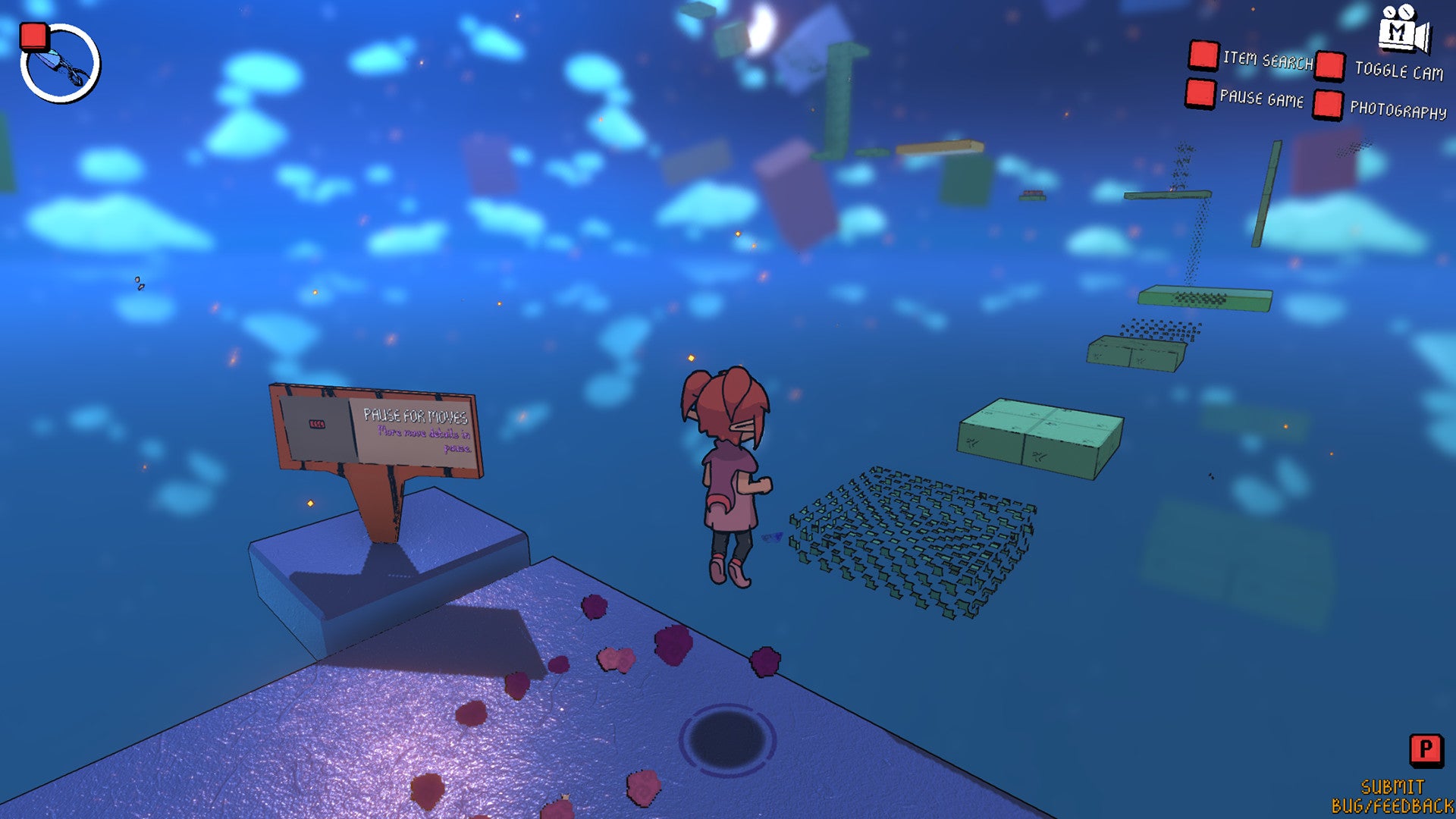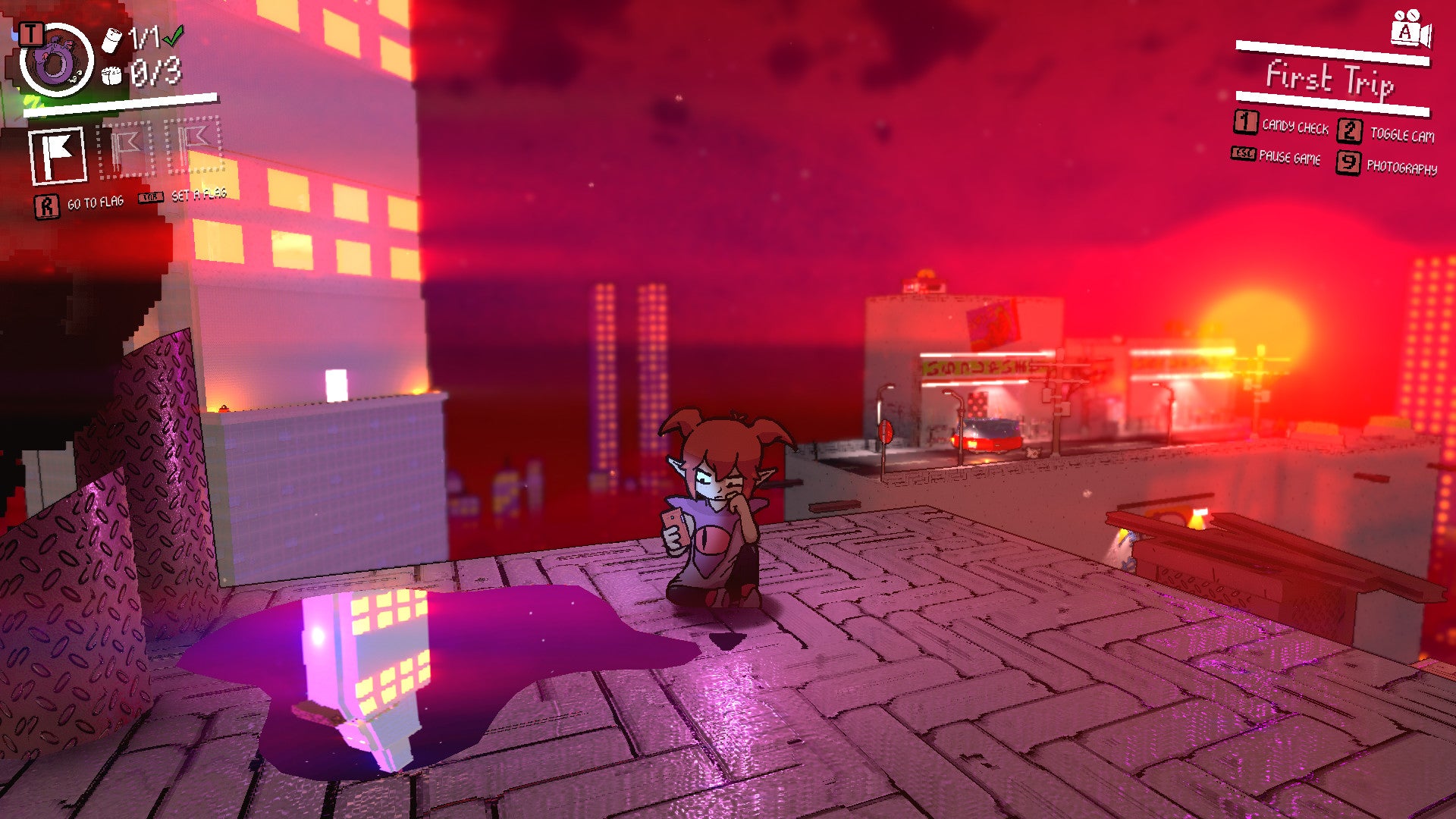Which is why I was intrigued by Slime-san developer Fabraz’ follow-up, which goes somewhere surprising yet also familiar - here’s the same tripped-out wit and charm, only this time it’s a fully 3D platformer, all of which seems like quite the leap for the small New York studio. At the heart of Fabraz is Fabian Rastorfer, a developer who, you can tell after half an hour’s chat, brings a whole lot of heart to his video games. Having been drawn to games as a young kid during the GameCube era, he soon combined his love of the medium with his passion for drawing comics and writing, making his first formative forays with RPG Maker. “It was kind of funny, because I think when I was around 18 I told my parents ‘Okay, I think I’ve made a very important decision - I think I want to get into video game development.’ And I remember distinctly but my parents looking at me like, ‘No shit.’” Rastorfer went to Parsons School of Design in New York, where he teamed up with his mentor to make an iOS game, and by the time he’d graduated he’d gathered enough connections to be able to start his own company. Slime-san helped put them on the map, and if you’ve played it you’ll be familiar with a certain feel that feels unique to Fabraz’ output, and that’s evident throughout Demon Turf. “I think any creator puts their flair into their creations - and sometimes they don’t exactly know what that flair is, per se,” says Rastorfer as he tries to pin down the Fabraz style. “There’s quirky humour to the worlds that we make, you know, colour and character and something that you just want to explore even if there’s not necessarily insane philosophical depth. There’s playfulness in it, and that’s what makes people want to explore them.” What fascinates me about Demon Turf is how Fabraz is going about making the transition from 2D to 3D whilst keeping the DNA of Slime-san intact. “I’ve referred to Demon Turf as the spiritual successor to Slime-san,” says Rastorfer. “The ideas, themes, gameplay elements - a lot of it has been translated over even though there are still fundamental differences - obviously, the biggest one being a whole other dimension. We went into Demon Turf thinking can we translate what people thought made Slime San work and apply it to a 3D platformer, and what can we directly transfer?” Demon Turf goes about the task with a fascinating solution, presenting a hybrid of 2D character art and 3D environments that, rather than providing a short cut, involves a whole load more work. “We’ve definitely made our workload harder by honing into this concept of 2D sprites in a 3D world. Depth perception, for example, is super important for 3D platformers, and so we had to put in a lot of work to make sure that the aesthetic does not clash with the gameplay. “Every animation has eight facings, and there’s an incredible amount of extra stuff that adds to depth - like particles whenever they step on the floor, collision circles, drop shadows, specific types of billboarding concepts. That was, I think, where we struggled the most, but what we spent the most time on. And thankfully, through Trials, we’ve learned that we’ve definitely gotten that figured out.” It’s those Trials that have been another canny part of Demon Turf’s development - sitting somewhere halfway between a demo and an early access release, they’ve been a series of 30 competitive speedrunning events whereby players can have a punt at earning top spot and see their own portrait in the game. The Trials have now run their course, but the demo remains available on Steam - and the impact it’s had on Demon Turf seems indelible. “I won’t say it fundamentally changed our direction,” says Rastorfer. “If anything, it confirmed that we were going in the right direction, but it totally influenced our game design all over the place. Because we released it early on and we’re so active in the community it was kind of an early access release.” The speedrunning nature of the Trials has helped push that feedback in a certain direction, too, as players explore the furthest reaches of what’s possible within Demon Turf. “We’ll see moments where we’re like, that wasn’t intended - but that’s awesome, so we’re going with it,” says Rastorfer. It’s even led to new options being implemented in Demon Turf at the request of the speedrunning community, such as sensitivity sliders for controls. For mere mortals like you and I, though, it looks like there’s plenty of meat to get stuck into when Demon Turf comes out on Switch, PC and PS4 courtesy of Playtonic Friends later this year.

